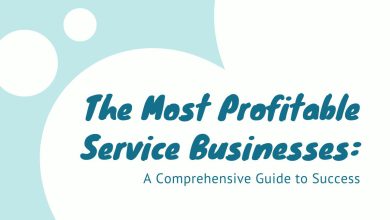
As a business owner, it’s essential to find ways to reduce expenses and increase profitability, but not at the cost of quality. Cutting costs can be a tricky task, but it doesn’t have to come at the expense of your products or services. Here are ten smart ways businesses can reduce expenses without sacrificing quality:
1. Audit Your Expenses:
When it comes to running a successful business, managing expenses is critical. It’s no secret that financially responsible companies are more likely to thrive in the long run. However, many businesses struggle with determining which costs are necessary and which can be trimmed without sacrificing quality. That’s where auditing your expenses comes in.
By auditing your expenses, you’ll get a clear picture of where your money is going each month. Once you have this information, it’s easier to identify areas where you can reduce spending without negatively impacting the quality of your product or service. For example, if you notice that you’re spending too much on office supplies or unnecessary software subscriptions, cutting back in these areas could save you hundreds or even thousands of dollars each year.
However, it’s important not to sacrifice quality for the sake of saving money.
2. Optimize Your Supply Chain:
In today’s fast-paced business world, supply chain optimization has become a crucial component of success. One of the most effective ways to optimize your supply chain is by finding more efficient routes for transportation. This can be achieved through the adoption of modern technologies such as GPS tracking systems and route optimization software that helps identify the shortest and fastest routes for goods delivery. By doing so, businesses can reduce transportation time and minimize fuel expenses without sacrificing quality.
Another way to optimize your supply chain is by renegotiating contracts with suppliers. With advancements in digital communication, businesses now have greater negotiating power when it comes to pricing agreements with suppliers. By leveraging data analytics tools to compare prices between different suppliers, businesses can make informed decisions on which supplier offers the best deal without sacrificing quality or service levels.
Optimizing inventory is also an essential strategy for reducing expenses in a business’s supply chain.
3. Automate Processes:
One area where savings can be found is through the automation of various processes such as invoicing and accounting. By automating these tasks, businesses can save time and money in the long run.
Automating invoicing allows for faster processing times, reduces errors, and improves cash flow management. This means that businesses will have more accurate financial data readily available to them, which can help them make better-informed decisions. Additionally, automated invoicing systems can send reminders for overdue payments or automatically charge late fees to ensure that all payments are received on time.
Accounting automation provides many benefits as well. By using software to track expenses and income, businesses can eliminate the need for manual data entry and reduce human error.
4. Focus on Quality Over Quantity:
In the world of business, it can be tempting to focus solely on quantity. After all, more sales and higher output often equate to greater profits. However, a singular focus on quantity can come at a cost – specifically, sacrificing quality. When businesses choose to cut corners to produce more or sell more cheaply-made products or services, they risk damaging their reputation and bottom line.
Investing in quality products or services is one-way businesses can reduce expenses over time. While it may require an upfront investment, choosing high-quality materials and skilled professionals can prevent costly repairs or replacements down the road. For example, a company that invests in durable equipment for its manufacturing processes will be less likely to experience breakdowns or malfunctions that require expensive repairs or replacements.
By prioritizing quality over quantity, businesses can also improve customer satisfaction and loyalty.
5. Negotiate With Vendors:
One effective way to achieve this is by negotiating with your vendors. By engaging in fruitful discussions with your suppliers, you can secure lower prices, longer payment terms, or other cost-saving concessions that can significantly improve your bottom line.
When it comes to negotiating with vendors, communication is key. Start by clearly outlining the products and services you need and their expected prices. Be transparent about your budget constraints and ask if there are any alternative pricing options available. You may also want to discuss the possibility of volume discounts or bundling multiple purchases for better deals.
Another useful strategy is to build strong relationships with your vendors over time. This can help create a sense of trust and mutual respect that can lead to more favorable negotiations in the future.
6. Consider Outsourcing:
Outsourcing non-core functions such as accounting, human resources, or marketing can be an excellent way to reduce expenses and free up time and resources for your core business. The benefits of outsourcing are numerous, including cost savings, increased efficiency, access to specialized expertise and technology, and enhanced scalability.
By outsourcing these functions to a trusted third-party provider, you can focus on what you do best – running your core business. Outsourcing can also help reduce the burden of managing in-house staff and overhead costs associated with maintaining facilities and equipment.
However, it’s important to note that outsourcing shouldn’t come at the expense of quality. It’s crucial to choose an outsourcing partner who has a track record of success in delivering high-quality services that align with your business goals. By doing so, you can rest assured that your outsourced functions will be handled professionally while ensuring your core business continues to thrive.
6. Implement Energy-Saving Measures:
As a business owner or manager, one of the most crucial aspects of running a successful enterprise is reducing expenses. While it may seem impossible to cut costs without sacrificing quality, implementing energy-saving measures can help achieve this goal. One way to begin is by turning off equipment when not in use. This simple step can result in significant savings on your monthly electricity bill.
Another effective way to reduce expenses is by using energy-efficient lighting options such as LED lights or compact fluorescent bulbs (CFLs). These types of lighting consume less power and last longer than traditional incandescent bulbs, lowering the need for frequent replacements and reducing maintenance costs. Additionally, installing motion-sensor switches in areas that are frequently unoccupied can help ensure that lights are only used when necessary.
7. Encourage Remote Work:
As businesses continue to adapt to the changes brought on by the pandemic, many companies are seeing the benefits of allowing employees to work remotely. One of the biggest advantages is a significant reduction in office space and utility costs. For businesses looking to reduce expenses without sacrificing quality, encouraging remote work is becoming an increasingly attractive option.
By allowing employees to work from home or other remote locations, businesses can save money on rent, utilities, and other operational costs associated with maintaining a physical office. This not only reduces overhead expenses but also creates opportunities for more flexible budgeting and forecasting for future growth plans. Additionally, with remote workers using their own equipment and internet service, there’s less need for costly updates or upgrades to company-owned technology.
While some employers may worry about a potential dip in productivity with remote workers, studies have shown that working from home can increase productivity levels.
9. Leverage Technology:
Businesses today are continually seeking ways to reduce expenses without sacrificing quality. One of the most effective ways is through the use of technology. Technology can help businesses automate processes, streamline operations, and save time and money.
Automation of business processes is a crucial step toward reducing expenses. Utilizing technology tools such as workflow automation software not only saves time but also improves accuracy and efficiency in processing tasks. By automating repetitive tasks such as data entry, invoicing, and inventory management, businesses can free up their staff to focus on more important areas that require human intervention.
Streamlining operations is another way technology helps businesses cut costs. By using digital communication tools like video conferencing, file-sharing applications, or cloud-based platforms, companies eliminate the need for physical meetings or paper documents hence reducing costs associated with travel or printing materials.
10. Invest in Employee Training:
Investing in employee training can be a valuable investment for any business. By providing your employees with the necessary skills and knowledge, they can become more efficient and effective in their work. This can lead to improved productivity, reduced waste, and increased quality of your products or services.
While investing in employee training may seem like an added expense, it is important to consider the long-term benefits. By reducing waste and improving efficiency, you can save money on materials and time spent on unnecessary tasks. Additionally, by increasing the overall quality of your products or services, you can attract more customers and improve customer satisfaction.
It is also important to note that investing in employee training does not mean sacrificing quality. It can have the opposite effect by ensuring that your employees have the skills and knowledge necessary to produce high-quality work.
Conclusion
There are many ways businesses can reduce expenses without sacrificing quality. By implementing smart strategies such as optimizing your supply chain, automating processes, and investing in quality products or services, businesses can save money while maintaining their high standards.




